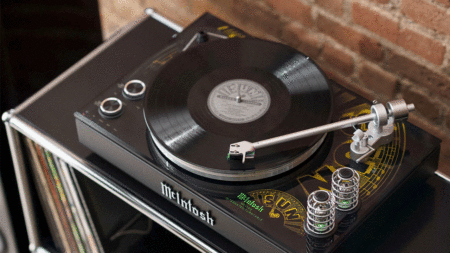Can you imagine a toast with a love letter on it? Sounds too good to be true, I suppose. But with a fun take on both design and breakfast, designer Ritika Kedia has created the Toaster Typewriter that burns letters onto bread. Featuring a repurposed typewriter, clay, and heat-resistant wire letters, Kedia’s invention will allow the user to type custom messages onto the toast. Imagine, a sweet Mother’s Day quote or Valentine’s Day message etched onto your piece of bread for breakfast in bed. Now that’s a gift that we all would appreciate.
Kedia used an old typewriter and recycled toaster to create this fun design. Then she shaped heat-resistant wires and food-grade clay boxes to create interchangeable alphabets. The toaster holds the piece of bread while you type a message onto it, making every morsel all the more special.
The invention of this unique breakfast machine wasn’t something Kedia just dreamed up at night and made the next morning. It took an extensive research process of 15 weeks where she explored the oft-missing entertaining aspect in design.
She wished to create something invigorating for an everyday, mundane object. Moreover, she talked to tens of people from various disciplines to comprehend the humor in their respective fields to come to a design that would intrigue people of different backgrounds.
Also Read: 10+ Glass Toasters to Ensure You Never Burn Your Toast Again
I got in touch with the designer herself to know the inspiration and motive behind this unique project. Here is what transpired:
Homecrux (HC): What was the inspiration behind the Toaster Typewriter? Why those two particular items?
Ritika Kedia (RK): The idea for the device was born out of the response received for another project of mine. As a part of a shorter project, I laser engraved my to-do list onto bread to make ‘edible to-do lists’. People found a lot of humor in it, and I wondered if I could stretch the joke. Watching the way that comedians can keep adding material to make their comedy bits longer and funnier, the Toaster-Typewriter was an attempt at making the bit longer.
The toaster and the typewriter were each key innovations that changed the acts of cooking and writing. Yet, they share the same sense of replaceability. The toaster is a device that is so easy to exchange with a pan, an open flame, or even a lighter. The typewriter, on the other hand, is a magnificent device, but it is of no use today with all the technology that exists. This created an entry point to break this familiarity and bring humor in.
HC: I read that you talked to various people from different fields while researching for this project. What was the interaction like and what did you learn?
RK: The purpose of these conversations was to understand how humor was practiced and strategically used in different ways. I interviewed 11 individuals from diverse fields such as design, psychology, music, climate activism, performance, acting, comic books, and storytelling. It was a joy to speak to all of these talented people and pick their brains about humor – something most of the interviewees didn’t actively reflect on but used extensively in their work. The main insight (there were many many) was that humor was a tool they used to connect better with audiences and to effectively create an entry point for critical conversations.
HC: How do you suppose this invention of yours could spark a humor aspect in the work of other designers?
RK: The 10 Commandments of Humor in Design were written to become a framework and serve as a guide for designers looking to bring more humor into their work. It has also been an established stone in my practice and process. It rethinks the Ten Principles for Good Design by Dieter Rams and challenges the seriousness of design. Proposing design to do more than just solve the problems of functionality and efficiency, it claims that humor can help design to be a medium for everyday imagination, a coping mechanism, a catalyst for social change, and a facilitator for uncomfortable conversations.
HC: What else are you working on that can pique interest like the Toaster Typewriter?
RK: That being said, the 10 Commandments are an evolving document. The research is ongoing. Since completing this project, I have moved back to Mumbai, where I have been extensively curious about the exercise of humor in South Asian cultures. I visited the Shekhawati region of Rajasthan on a two-week research trip in April, to learn more about the vivid humor in the Shekhawati wall paintings. I met a lot of funny people – local chitrakars, tour guides, researchers, and haveli owners, and got to collaborate with a local repairman Ashok Dugar, haveli caretaker, and artist (which he doesn’t think he is) – to make a series of objects. More from that project will be on my website by the end of this month.
The Toaster Typewriter is an amazing idea that we would love on our kitchen counters. We are keeping our fingers crossed for this primordial yet revolutionary design to materialize at a commercial level so our toasts can also have some humor.




Via: designboom
Follow Homecrux on Google News!




